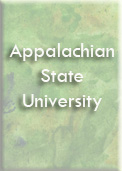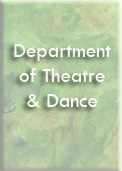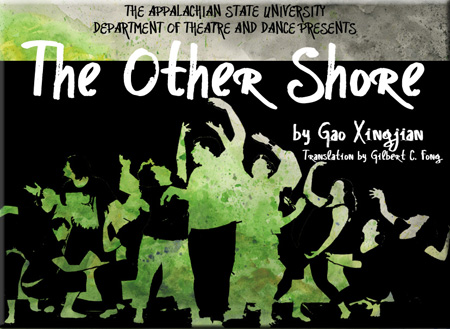

Dramatic Criticism
Below are descriptions of several books and articles (compiled and annotated by theatre major Sean Kimbro) that discuss Gao Xingjian's work specifically and Chinese experimental theatre in general.
Gao, Xingjian, and Gilbert C. Fong. The Other Shore: Plays. Sha Tin, N.T., Hong Kong: Chinese University of Hong Kong, 1999. THIS SOURCE IS THE SCRIPT USED BY THE PRODUCTION.
This source is extremely informative because it is the play itself, accompanied by a fantastic introduction by Gilbert Fong. Key things to note are that “The Other Shore” is the first instance in Gao’s career that marks a transition from writing more public subject matter to that of more private concerns, and is a great example of the mixture of both. The introduction also includes a three-page description of the play itself (pp. xxvi-xxix), specifically highlighting the original production, as well as the overarching themes of collectivism and personal salvation. This section also breaks down the play by scenes, describing the background meaning behind each individual unit. This will be invaluable to the actors in terms of discovering potential motivations for each scene, as well as Gao’s intended contexts for the state of current affairs in China.
"Gao Xingjian." Western North Carolina Library Network. Columbia Electronic Encyclopedia. Web. 14 Jan. 2011.
This source describes the author’s personal background, a brief list of some of his major works (of which The Other Shore is not included) and other interests, such as his popular success as an inkwash artist. It is helpful to understanding The Other Shore in the sense that it details influences that Gao had in his life, including those of Beckett, Ionesco and Brecht, who’s abstract themes and experimental ideals clearly played a definitive role in developing Gao’s style. This source is a good place to start; a quick introduction to Gao touching upon enough topics to leave the reader wanting to know more about the subject.
Gao, Xingjian, and Mabel Lee. The Case for Literature. New Haven: Yale UP, 2007. Print. ON RESERVE AT BELK LIBRARY.
This source is a collection of essays by the playwright, including his Noble Prize acceptance speech, which shares the same name as the collection. Other valuable information is contained in the introduction, written by sinologist Mabel Lee, as well as in the essays “Without Isms” and “Wilted Chrysanthemums”, which discuss his approach to writing and theatre, as well as personal life experiences. The bias detected stems from Gao’s own personal life experiences and thus are more of a help than a hindrance in understanding the playwright, but his manner of writing and subject matter are more geared towards an adult audience and are not immediately approachable- several may require two or three reads to fully grasp. This source is invaluable for reading commentary by the playwright, rather than simply descriptions of him by others, interviews, or his other works.
Gao, Xingjian. "The Aesthetics of Creation." China Perspectives. French Centre for Research on Contemporary China, Feb. 2010. Web. 4 Jan. 2011.
This source is an article written by Gao Xingjian for the online publication “China Perspectives”. Here he attempts to explain the concept of aesthetics as it pertains to psychology, and more importantly, how it can be used to develop an art. He poses the idea that artists must break through existing norms in order to develop their own creative works, or else they will simply be recreating what others have done before. Since it is again by Gao Xingjian, it carries with it his own personal viewpoints and his highly biased towards the ideas of artistic freedom and creativity, and is not approachable by many people outside of those who have experience with creating or understanding art. It is a good source for understanding how Gao views the creative process and may help shed light on how he goes about creating his own works.
Łabędzka, Izabella. Gao Xingjian's Idea of Theatre: From the Word to the Image. Leiden: Brill, 2008. Print. ON RESERVE AT BELK LIBRARY.
This source is potentially the best one listed in terms of helping understand The Other Shore. Not only does the introduction give a very detailed description of Gao, his life, and writing style, but there is also an entire chapter dedicated to The Other Shore (Chapter 5), which starts off describing the play as an attempt to created a “versatile, westernized actor”. The chapter also includes documentation by Gao of the first performance at the Hong Kong Academy for Performing Arts in 1995. The author goes in depth into her coverage of Gao, and as such this work is an especially helpful tool in approaching understanding and interpreting Gao’s works.
Lin, Sylvia L.C. "Between Homeland and Heartland: An Interview with Nobel Laureate Gao Xingjian." World Literature Today May-June 2008: 12-14. EBSCO. Web. 4 Jan. 2011.
This source is an article printed in World Literature Today, printing the dialogue of an interview between Sylvia Lin and Gao Xingjian. The article primarily focuses on his acceptance speech and his newer projects, including a film and current writing, as well as his joint nationality. Gao considers himself to be more French than Chinese, even though he believes most people view him as only Chinese, and therefore he does not put too much value on nationality. The interviewer does a good job of asking non-loaded questions that are broad enough to give Gao a great deal of room to enumerate his points, yet are specific enough to limit the scope of their discussion to certain key things. This article is a great help in understanding Gao as a person, how he communicates, but isn’t extremely helpful for understanding The Other Shore specifically because the play isn’t mentioned once in this interview.
Quah, Ren Sy. Gao Xingjian and Transcultural Chinese Theater. Honolulu: University of Hawai'i, 2004. ON RESERVE AT BELK LIBRARY.
This source takes a new look at Gao while attempting to classify his works as that of “transcultural” theatre, namely meaning that Gao’s work carries a sense of universality while still maintaining specificities of individual cultures. It also helps shed light on Gao’s unique approach to playwriting, which stems from advice from the resident director at the National Youth Theatre, Deng Zhiyi – “a play is born in the rehearsal room rather than the script. You have to be familiar with the theater before you write a play.” While this book makes little reference to The Other Shore, and instead focuses on Gao’s earlier works The Bus Stop and Alarm Clock (even in favor of his most well known work, Snow Mountain), it is a great source of information for Gao’s early life and his development in style as a playwright, as well as connections between this and events in his personal life.
Quah, Ren Sy. "Historical Reality, Fictional Narrative." China Perspectives. French Centre for Research on Contemporary China, Feb. 2010. Web. 4 Jan. 2011.
This source is an extremely helpful source in understanding Gao’s perspective while undertaking writing and directing The Other Shore because, starting on page 6, it discusses the play as a whole. Including a brief history of the work and its staging, as well as Gao’s reasoning for writing it, Quah goes into great depth describing two specific scenes from the show, “The Card Game” and “Learning to Speak”. It also includes a photograph of the former scene taken from Carnegie Mellon’s 2008 performance, as well as a chart that will help in placing oneself in the audience’s position. Quah also poses the idea that Gao uses the concept of “the other shore” as a metaphor for contemporary China. While the author definitely takes a specific stance in describing these scenes and the play as a whole and leaves minimal room for alternative view points, Quah sites Gao as a source and his opinions are broad enough for each reader to take specific ideas out of them that are purely their own.
Rekdal, Paisley. "The Way We Live Now." The New York Times Magazine 10 Dec. 2000: 51-54. EBSCO. Web. 29 Dec. 2010.
The New York Times magazine conducted this interview with Gao Xingjian, and despite the fact that it took place after he became a Noble Prize winner (as most readily available ones are), it focuses more on his past than his present. While certain questions are posed that deal with how he approaches writing currently, they are predominately about his past. The topics include his parents, a 10-month trip up the Yangtze river, and a time when he was forced to burn everything he owned, one of the reasons why he says he will probably never return home. This source is not extremely informative, and the interviewer asks for little elaboration, but it provides interesting background information about Gao that may not be available elsewhere.
Wang, David D.W., and Torrey L. Whitman. "A Conversation with Gao Xingjian." Asia Society. 17 Aug. 2001. Web. 2 Jan. 2011.
This source is a written documentation of an interview that took place between Gao and the Asia Society in New York City. The conversation is filled with very detailed information about Gao; the interviewer asked articulate, well thought out questions, and Gao provides just as in depth answers. Topics include those of his past works, his favorite writers, and cultural experiences. One topic discussed is Gao’s idea of “nothingism,” where he describes his attempts to live without following specific trends or styles. The Other Shore is never specifically mentioned in the interview, but the quality of this interview is fantastic and it is a great aid in understanding Gao’s past and personality.
Zhang, Yinde, and Michael Black. "Gao Xingjian: Fiction and Forbidden Memory." China Perspectives. French Centre for Research on Contemporary China, Feb. 2010. Web. 4 Jan. 2011.
This source is another article written in China Perspectives that details Gao’s approach to writing, specifically how he approached his works Soul Mountain and One Man’s Bible, and his concept of “fictionalism”. This article is especially relevant to understanding The Other Shore, because of Gao’s discussion of One Man’s Bible, a self-described “work of memory” that helped him develop ideas and several small pieces that may later on become independent works themselves. This article, as well as all of the others from China Perspective, was developed in close collaboration with Gao himself and as such are quite reliable sources not biased in any extremely notable way. It may provide a great resource when attempting to understand Gao’s past and his approach to writing, as well as his vision of theatre.
Zhao, Henry Y. H. Towards a Modern Zen Theatre: Gao Xingjian and Chinese Theatre Experimentalism. London: School of Oriental and African Studies, University of London, 2000. NOT AVAILABLE AT ASU EXCEPT THROUGH INTERLIBRARY LOAN.
This book was an interesting take on the views of experimental theatre in China. The author contends that Gao is the only truly successful Chinese experimental theatre artist (playwright or otherwise) of the 1990s, after the failed experimental movement of the 1980s, and identifies his unique aesthetic as “Modern Zen Theatre”. This is opposed to post-modern theatre, which Gao supposedly detests, which is practiced by everyone else. This book also specifically discusses The Other Shore in detail and points out that Gao is a “director-like playwright” whose plays simply cannot be understood or appreciated fully without at least visualizing them as a performance.
